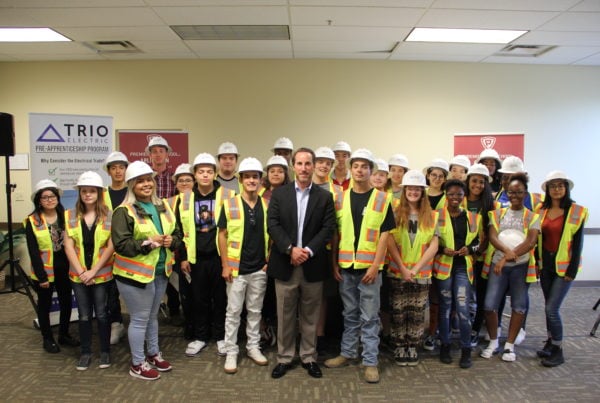When it comes to jobs in the architecture and construction career cluster, many positions depend on work experiences more than education levels. Several Premier High Schools, located in areas where there is a high demand for workers in architecture and construction positions, offer a CTE pathway in architecture and construction. If you are interested in a job in this sector, getting the advanced experience through a CTE program can help you get ahead in pursuing the career of your choice.
- Growth: 13%
- Wage: $40,128
- Openings: 33
- Education: Short-Term on-the-job training.
- Job Description: Set up or repair rigging for construction projects, manufacturing plans, logging yards, ships and shipyards, or the entertainment industry.
Floor Sander and Finisher
-
- Growth: 17%
- Wage: $28,623
- Openings: 8
- Education: Moderate-term on-the-job training.
- Job Description: Scrape and sand wooden floors to smooth surfaces using floor scraper and floor sanding machine and apply coats of finish.
Electrician
-
- Growth: 21%
- Wage: $40,024
- Openings: 2305
- Education: Long-term on-the-job training.
- Job Description: Install, maintain, and repair electrical wiring, and fixtures. Ensures that work is performed in accordance with relevant codes. May install or service streetlights, intercom systems, or electrical control systems.
Interior Designer
-
- Growth: 24%
- Wage: $45,991
- Openings: 241
- Education: Bachelor’s degree
- Job Description: Plan, design, and furnish interiors of residential, commercial, or industrial buildings. Formulate design that is practical, aesthetic, and conductive to intended purposes, such as raising productivity, selling merchandise, or improving lifestyle. May specialize in a particular field, style, or phase of interior design.
Architect
- Growth: 18%
- Wage: $73,242
- Openings: 374
- Education: Bachelor’s degree
- Job Description: Plan and design structures, such as private residences, office buildings, theaters, factories, and other structural properties.
The information provided about a sampling of occupations within architecture and construction is taken from the Texas Workforce Commission and provides averages that can vary with location and time spent working. When looking at a job, understanding the education level need, growth and openings will determine the wage and eligibility. Growth in an industry often means there are more opportunities for students. The number of openings can determine the wage. Even if a job does not require extensive education, but has few openings, the job can be more competitive and pay a higher wage. For more information, visit Achieve Texas’ Architecture and Construction Magazine.
While only five occupations are highlighted here, students can find more information at America’s Career InfoNet, Competency Model Clearinghouse, Occupational Information Network, and the U.S. Department of Labor Occupational Outlook Handbook
![]()




